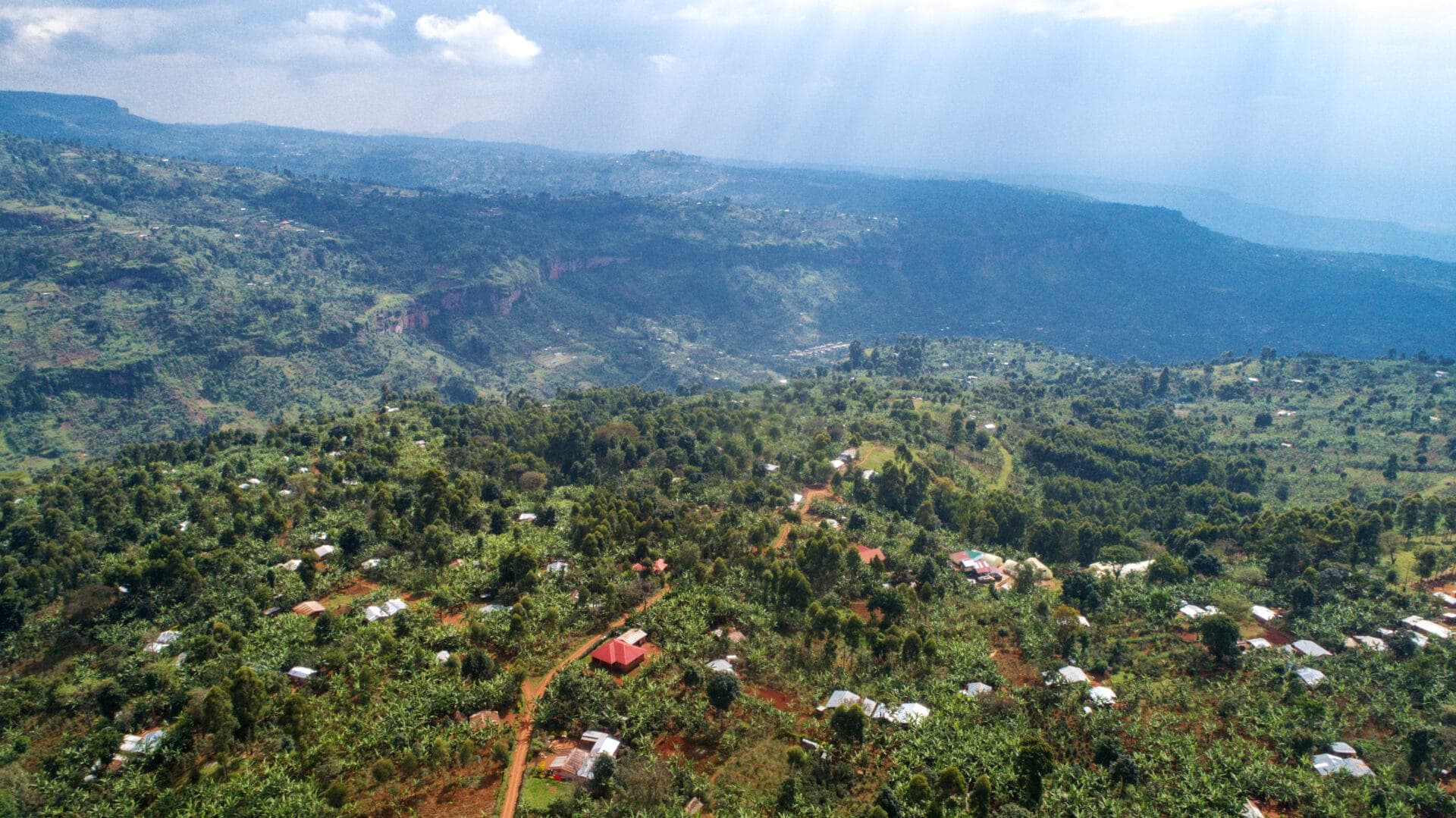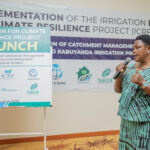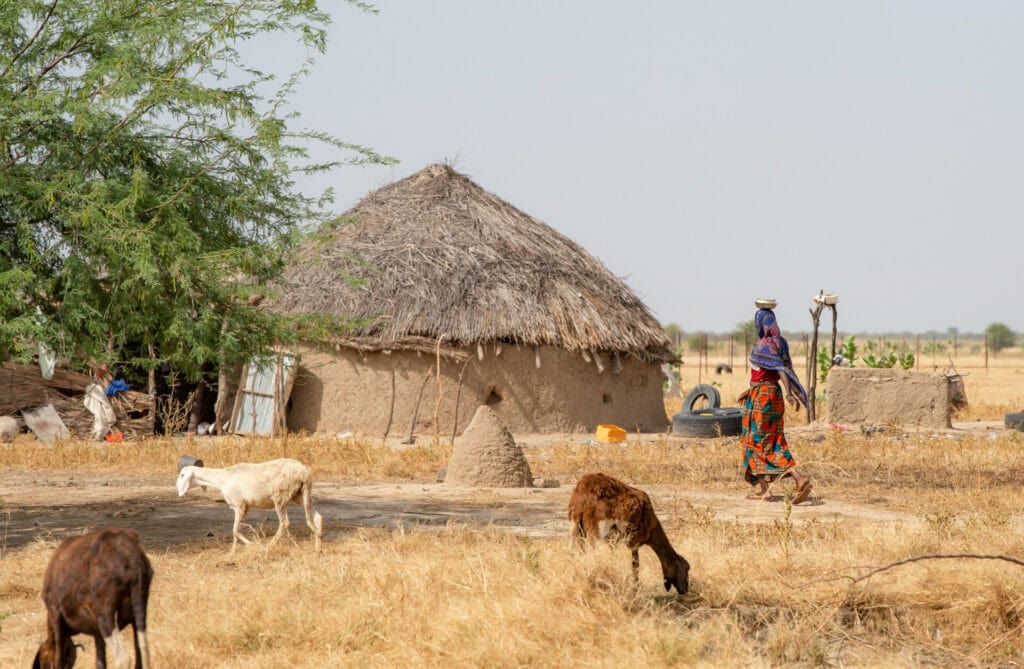Bamboo to reduce the cost of rainwater harvesting

Through the Green Future Farming Project, AidEnvironment is piloting the use of bamboo as the main structural material for rainwater harvesting tanks in coffee-growing communities in Uganda. The lower costs will enable farmers to collect more rainwater and prevent soil erosion.
The Sebei region on the slopes of Mount Elgon produces some of the best specialty Arabica coffee in Uganda. The area receives 920–1,650 mm of rainfall per year, and the communities have trouble accessing clean water for home use and processing the coffee. The mountainous terrain makes many small rivers and streams that traverse the region inaccessible. Farmers are forced to hire motorcycles to collect water from difficult to reach rivers and streams, which increases the cost of coffee production and reduces profits. Moreover, excess rainwater that is not harvested erodes the fertile topsoil as it runs down the slopes and causes flooding downstream.
Very few farmers in the project areas harvest or store rainwater in large quantities. One of the main reasons for the limited harvesting of rainwater is the prohibitive cost of ferro-cement tanks.
Construction of bamboo tanks
Bamboo has historically been used as a building material due to its inherent properties: it regenerates, it is biodegradable, it has high tensile strength and it is lightweight. Bamboo was never used to reinforce tanks in Uganda. The GFF project will introduce several rainwater harvesting technologies that use bamboo and other locally available materials. In addition to the environmental benefits, initial estimates indicate that a bamboo reinforced tank would cost about 40% less than a ferro-cement tank of the same capacity.
The tanks are being built by a team of mostly young local masons, trained and supervised by AidEnvironment. It is expected that the masons will replicate the technology in other areas and earn a living from marketing and building the tanks for other community members. The project will promote the “bamboo tanks” through a blended financing model involving a subsidy, a loan component, and an up-front own contribution by the beneficiary farmers.
For more information, please contact Raymond Tumuhaire




